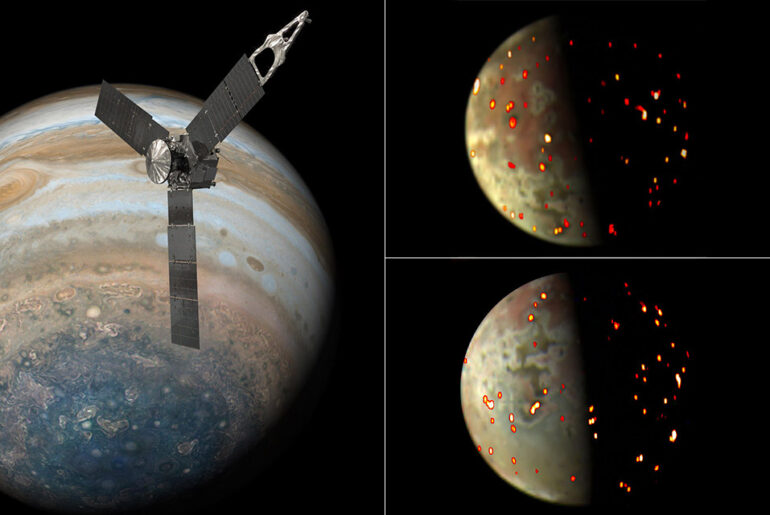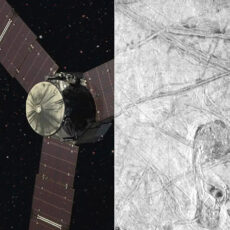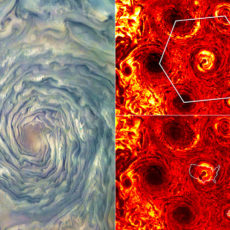
NASA’s solar-powered Juno spacecraft has captured amazing new images of Jupiter’s fiery moon Io from an altitude of approximately 22,060 miles. The spacecraft has made 50 passes of Jupiter while also collecting data during its close encounters with Europa, Ganymede and Io.
Io is only slightly larger than Earth’s Moon and experiences immense gravitational forces from Jupiter, Europa and the biggest moon in the solar system, Ganymede. This means that Io is continuously stretched and squeezed, which are both actions linked to the creation of the lava seen erupting from its numerous volcanoes.
- SMARTPHONE-POWERED SKY TOUR: No experience needed! Just dock your phone, launch the StarSense Explorer app, and follow the on-screen arrows to locate...
- PATENTED STARSENSE TECHNOLOGY: Unlike other astronomy apps, StarSense Explorer uses sky recognition technology to turn your phone into a celestial...
- TONIGHT’S BEST TARGETS, INSTANTLY: The app generates a curated list of the top objects to see based on your time and location. See planets, bright...


We are entering into another amazing part of Juno’s mission as we get closer and closer to Io with successive orbits. This 51st orbit will provide our closest look yet at this tortured moon. Our upcoming flybys in July and October will bring us even closer, leading up to our twin flyby encounters with Io in December of this year and February of next year, when we fly within 1,500 kilometers of its surface. All of these flybys are providing spectacular views of the volcanic activity of this amazing moon,” said Scott Bolton, Juno principal investigator from the Southwest Research Institute in San Antonio.










